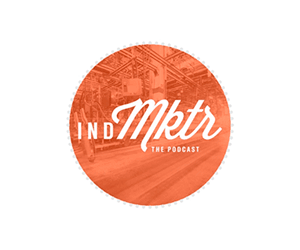Why is it that more B2B companies don’t publish content that converts readers into buyers? According to Marketing Charts, content is one of the most important things in the B2B marketers arsenal — per their analysis, 52% of B2B customers claim that they are “definitely” more likely to buy from a brand after reading their content.
In the first place, many B2B companies don’t spend enough on marketing to support a robust content marketing program. According to Statista, a quarter of all B2B companies allocate only 5% of their total budget to marketing.
But those that do invest in content marketing often face a more insidious challenge. They publish all the time but their readers just aren’t converting into buyers. Why is this?
Luckily for B2B marketers, there are certain solutions you can utilize to deal with a situation like this. Let’s start with the problem — why your readers aren’t turning into buyers — and offer some writing tips to help you create content that converts.
Why Aren’t Your Readers Converting?
Before attempting to improve your content or your content strategy, you should first understand why your readers aren’t turning into customers. There could be a number of reasons for this. Here are some reasons why your readers aren’t converting into customers:
- You don’t have a posting schedule – If you are posting content irregularly, your content will also perform irregularly. Moreover, if you are using multiple platforms, you should align the content you post on each one of them to get the best results out of your actions. No posting schedule could also mean that you sometimes post too much while posting too little at other times. Neither of the two situations is good for you.
- You don’t know who you are posting for – As cliché as it may sound, knowing your audience is a must. If you don’t know who your target audience is, you can’t create content that converts. You need to know your readers’ interests, pain points, buying behavior, and so many other essential characteristics if your content marketing is to be truly effective.
- You prioritize the wrong things – Some business owners prioritize quantity over quality, others prioritize sales over readership, yet others prioritize short-term over long-term results. In all of these cases, you are putting the wrong things on the pedestal and focusing on unrealistic goals. Instead, you need to reevaluate your priorities and realize what you truly need in terms of content.
Tips for Creating Content That Converts
1. Use Social Proof
So, what exactly can you do to start converting your readers into customers? First of all, you need to use social proof. It’s great to work on your own content, but it’s also crucial to realize that your customers’ content is also important for you. Social proof comes in the form of customer reviews and testimonials, which could be posted anywhere online. Your job is to collect these testimonials and reuse them in your own content.
Of course, the easiest way to use social proof is by simply reposting it on the platform where it appeared (e.g., on social media). However, it’s much more effective to take the reviews you found on Instagram and use them on your website or in your email newsletters. You can also create a section on your website where your customers can post reviews and testimonials. This will make the whole process of collecting testimonials much easier.
2. Collect Customer Feedback
While it may seem that customer reviews and testimonials are exactly the same thing as customer feedback, this is not exactly true. With reviews and testimonials, you publish them as is. Customer feedback is input that you use to inform your own marketing efforts.
Customer feedback can be collected by directly asking your customers to tell you how they feel about your company, products or services. You can also get feedback from your readers. Once you have relevant feedback, you will be able to use it to improve your products and/or services, your content and your overall marketing strategy.
The best way to collect customer feedback is by creating surveys. These surveys can be distributed on a variety of platforms (e.g., on your website, via email marketing) for customers to complete. When it comes to reader feedback, collecting it is somewhat easier. You can also create surveys for this, but you can start by asking your specific audience segments for feedback. For example, ask your Instagram followers or your blog readers to leave their opinions in the comments.
3. Reduce Distractions
This may sound like an unusual tip when talking about content, but it’s an effective one nonetheless. Many marketers forget that content doesn’t exist in a vacuum. Any content you post will be formatted in some way and will be presented in a certain environment — the particular design of the platform where it appears. Consequently, if there are issues with this design, the content can suffer.
Evaluate your website’s design. Does it have good UI and UX? If so, your readers shouldn’t get distracted by anything while reading your content. Any flashy elements could potentially prevent your readers from turning into customers. Even pop-ups can become very annoying, so don’t go overboard with them.
4. Diversify Your Content
A good rule of thumb for anyone who wants to create content that converts is to focus on your content first and foremost. Hire the most professional and experienced writers from the best custom writing services and have them create high-quality content for you. What you can forget, however, is that the types of content you work with also matter.
Instead of solely focusing on a single type of content (e.g., blog posts), diversify your content. Write video scripts and create videos. Write podcasts and create podcasts. Write outlines and create infographics. All of these originate in the written form but translate into vastly different types of content, all of which will help you convert readers into buyers.
5. Be Specific with CTAs
Last but not least, you need to be more specific with your CTAs. A call to action is such a common feature of any piece of content that most content creators and marketers likely don’t even think twice about using them. This kind of attitude could lead you to using generic CTAs that don’t really work.
To change this, aim for your CTAs to be more specific. What exactly do you want your readers to do? Is it just the purchase? You might want them to subscribe to your newsletter first and then guide them to the purchase phase. This line of questioning applies wherever you publish your content, whether it be on your website, on social media, or in an email communication.
Crafting Content That Converts
To sum up, an ineffective content marketing strategy is usually one where content doesn’t work the way you want it to. Everything else could be in place, but if your content is off in some way, you won’t achieve the results you are aiming for.
That’s why you need to improve your content marketing primarily by improving your content quality. Use the tips in this article to help you write better content that converts.




